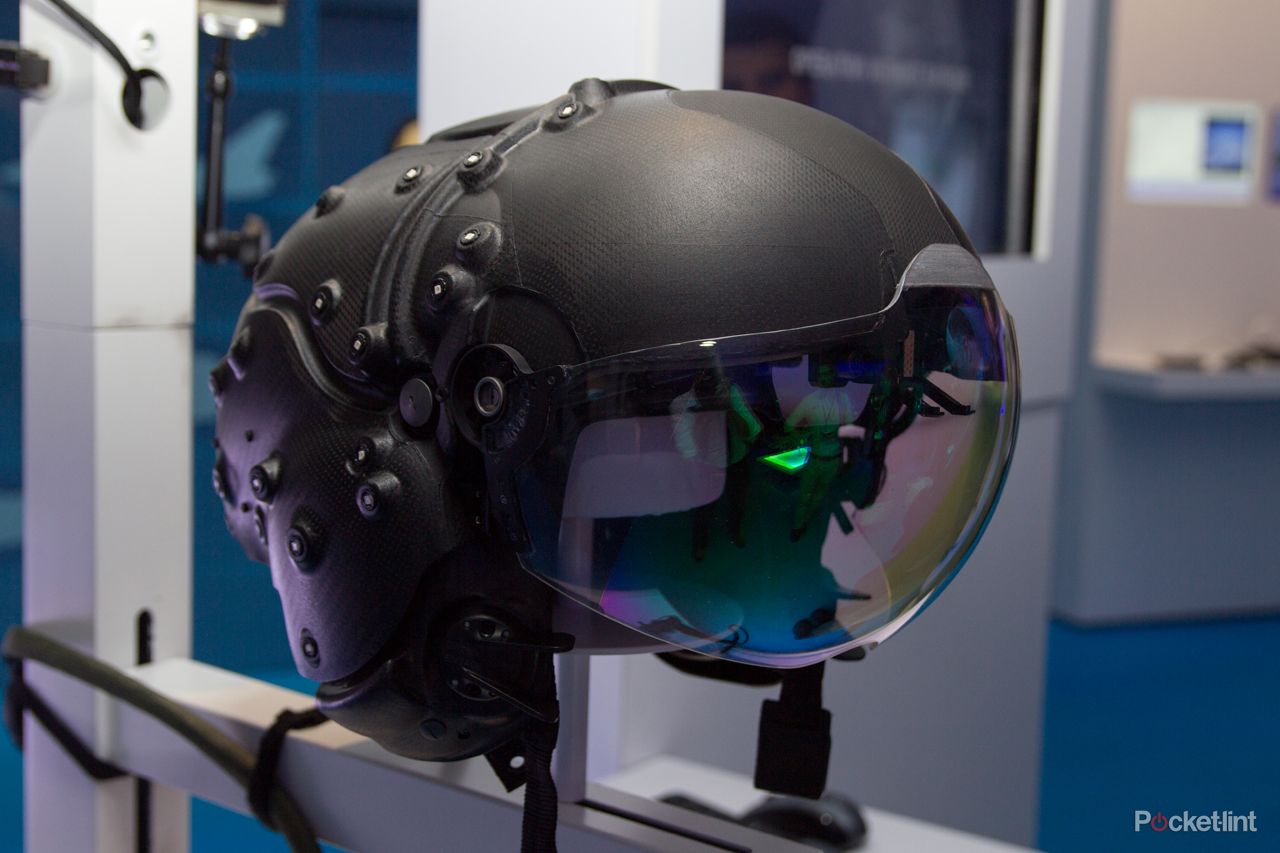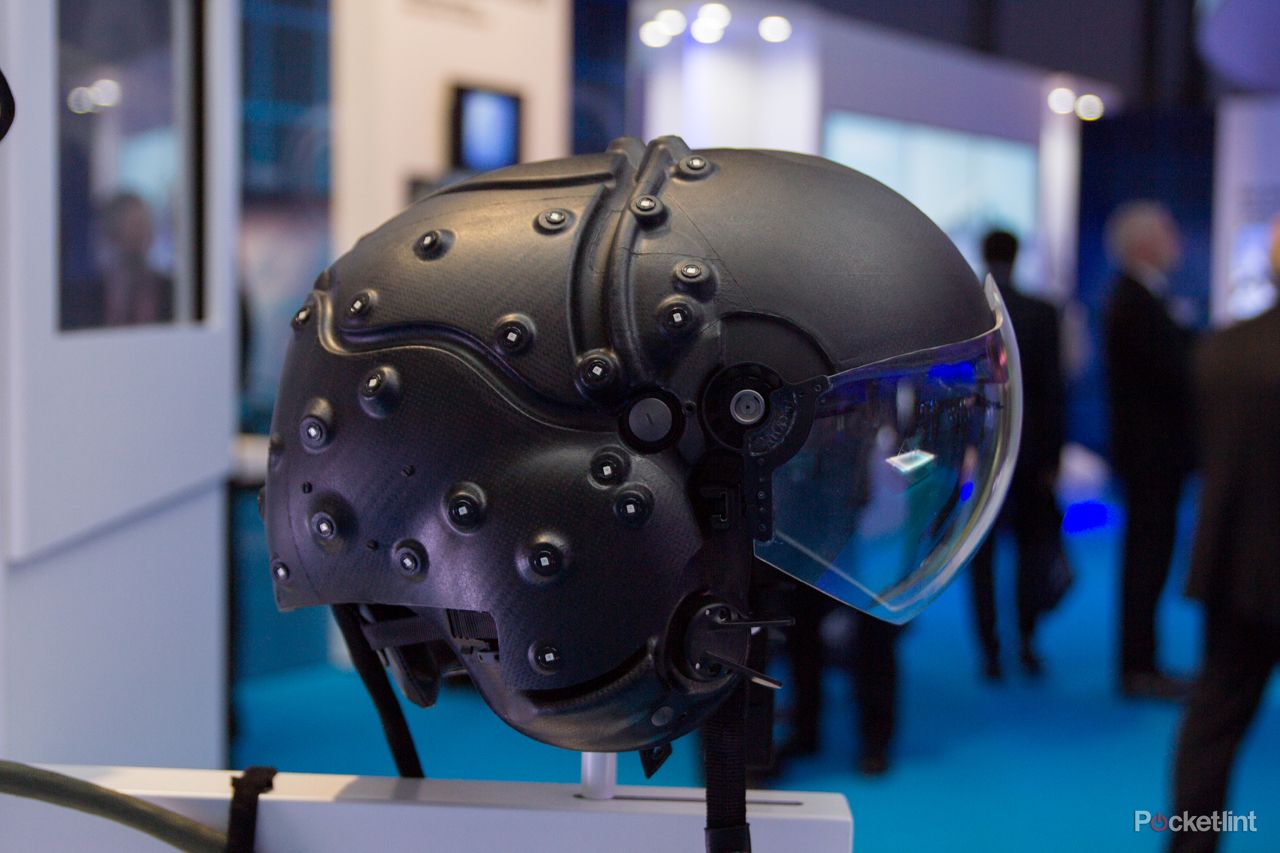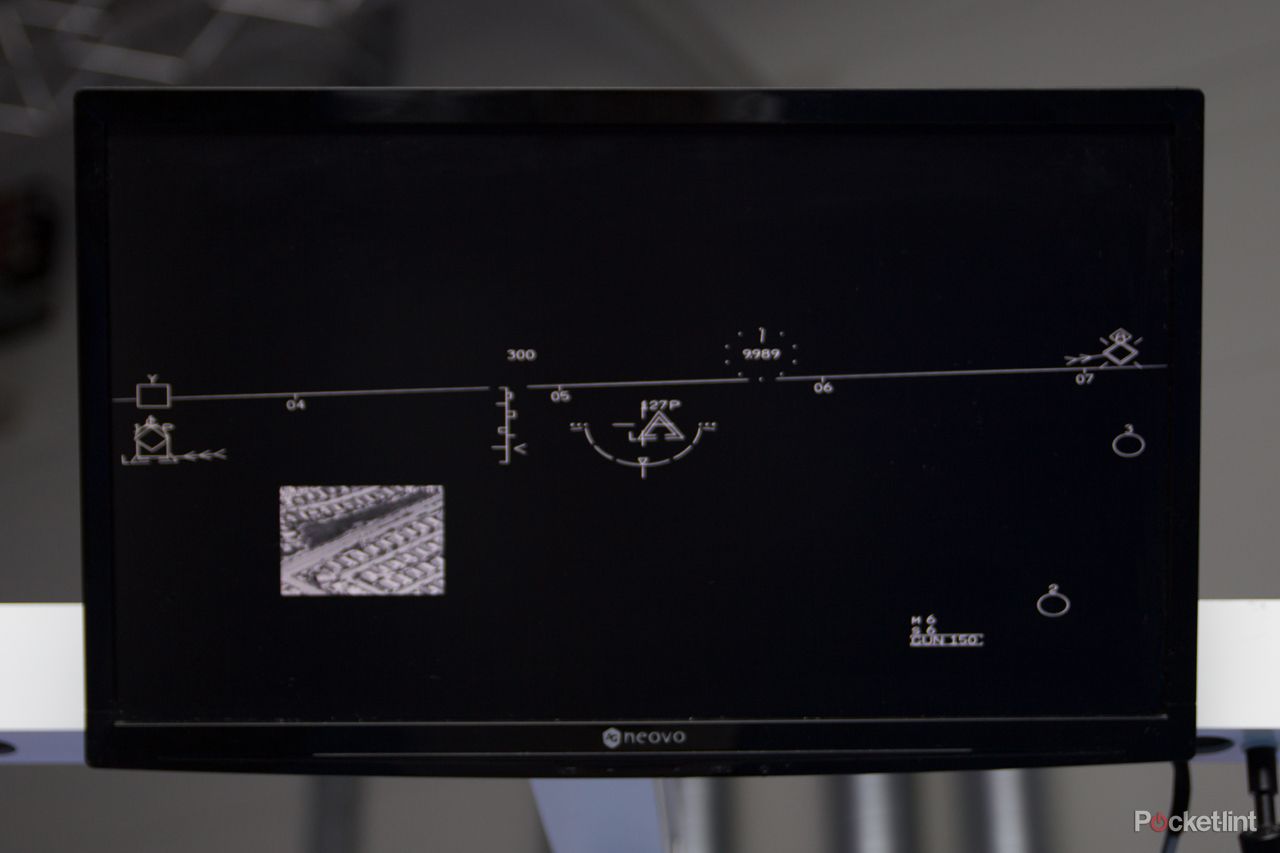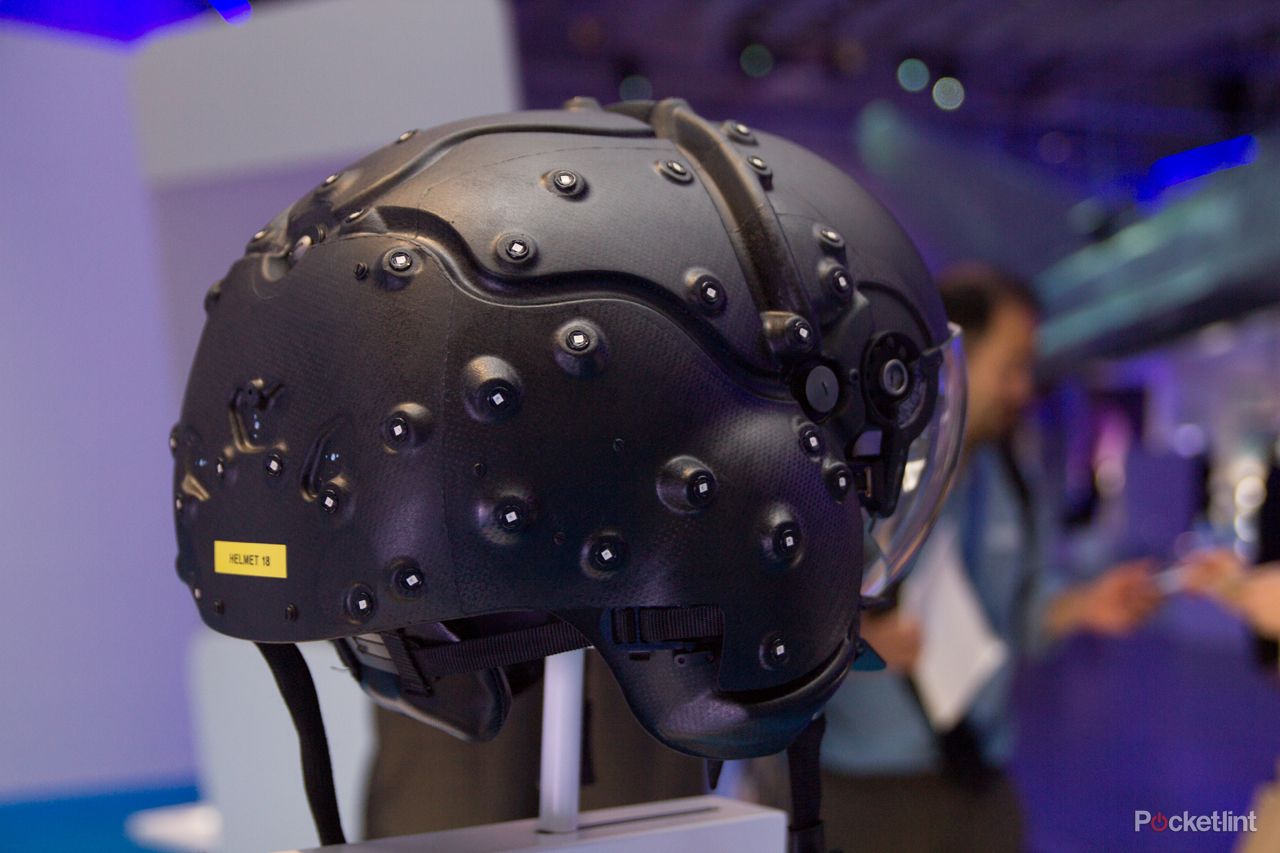BAE Systems today unveiled the Striker II helmet-mounted display (HMD) system at the Farnborough International Airshow, looking to streamline the flow of information to the pilots of combat aircraft.
The biggest change that Striker II brings over the predecessor and other aircraft helmets, is the integration of night vision capabilities, doing away with the need for separate night vision goggles (NVG).
The Striker II comes in two sections, the inner helmet is fitted to the pilot and the outer connects over the top. It's this outer section that's very smart. It not only provides all the protection the pilot needs in emergencies, but it's packed full of sensors and technology, with a projected visor display.
Once on your head, the information is projected onto the inside of that visor, overlaying everything you can see through the visor. As you move your head, that information moves with you. The system is entirely digital, so there's no limitations on the information that can be displayed, the characters used or the layout - everything can be customised by the customer.
That means you can have a video feed of a target you might be locked-on to, whilst still showing you other targets in your environment, your horizon, heading armaments and so on. Information can be layered, so there's the potential for viewing the 3D battlefield in the future through the same display.
We had the chance to give this a test run and it's really impressive. Watching the video streaming in one corner, whilst still being able to look through at the real world feels really natural. The information was overlayed in green, but because it's in the visor, it's practically impossible to photograph. The displayed information was exported to a monitor on the BAE Systems stand and although in black and white, it gives you an idea of the layer of info you'll get. That's a live streaming video on the bottom left corner.
The integrated digital night vision camera (DNVC) - an Intevac ISIE-11 sensor with a 1600 x 1200 resolution - has plenty of advantages. It's central location in the "Cyclops" position, between and just above the pilot's eyes, feeds the information it gathers through into the HMD of the pilot. (It's not pictured on the sample we photographed above because there's restrictions on who gets access to it.)
Intregrating the DNVC means a seamless transition from day to night vision modes, without the need to attach a pair of conventional NVGs. For fast jet pilots there's the added advantage of not having that extra weight on the front of the helmet, which is a consideration in high G environments. There's also no need for cockpit stowage of goggles.
Integrated night vision also means that there's no obscuring of the cockpit controls as you can look right through the visor display.
The DNVC offers digital zoom to aid with target verification, and it overcomes lots of problems that conventional night vision goggles have, like blooming, halos and scintillations. Additionally, because this is a camera sensor, it can record mission video, ideal for debriefing or training.
Scattered across the outside of the helmet are sensors that work with cockpit-mounted cameras so that the precise position of the helmet can be tracked and precise movements detected. There's no latency, no lag when you move, so it's faster, giving the pilot an advantage in target aquisition.
The Striker II is design for both fixed and rotary wing aircraft and it currently under testing on Typhoon, expected to replace the Striker helmet that's currently deployed.
Although Striker II is a highly technical piece of equipment, having worn it, what you get in front of your eyes seems incredibly simple and very natural.




